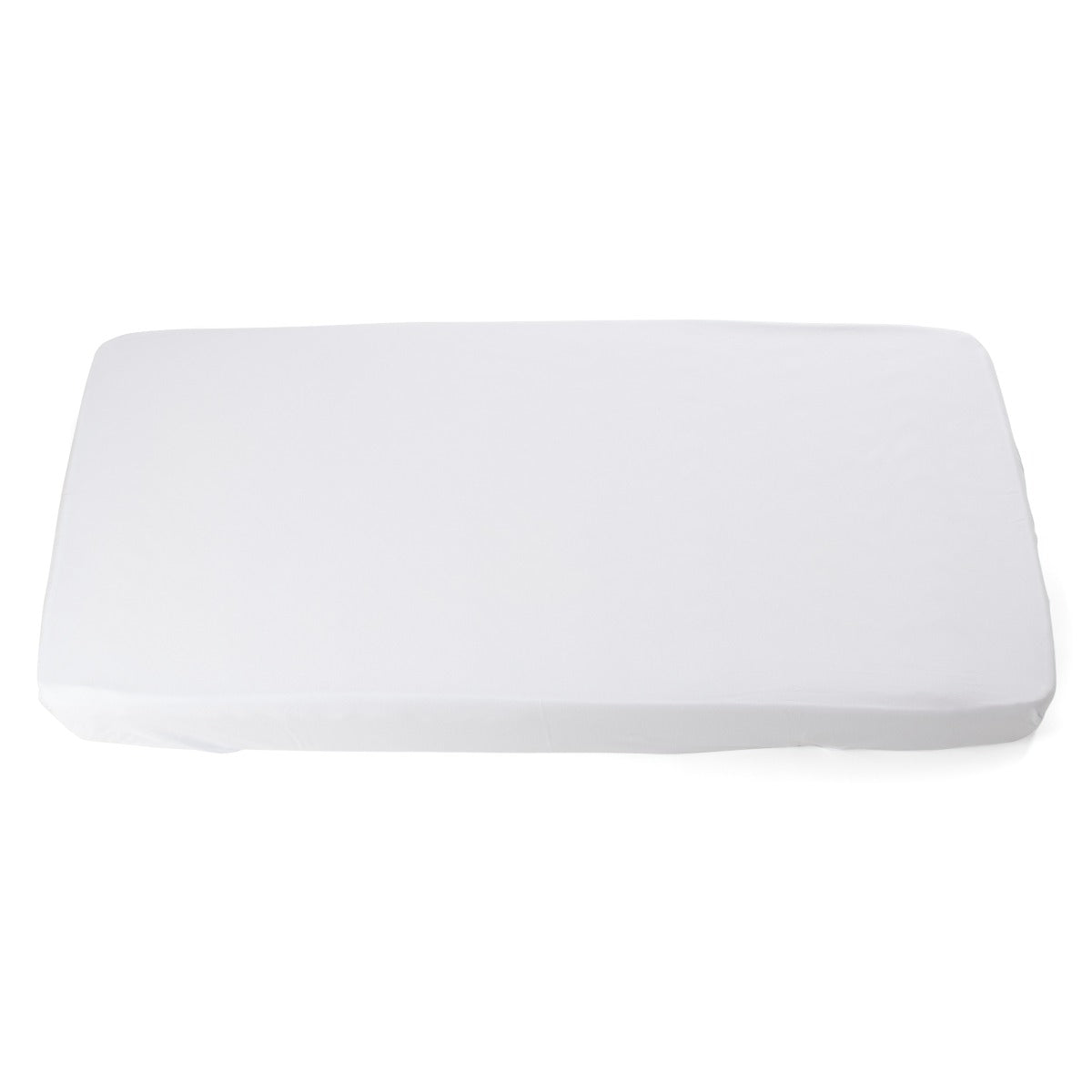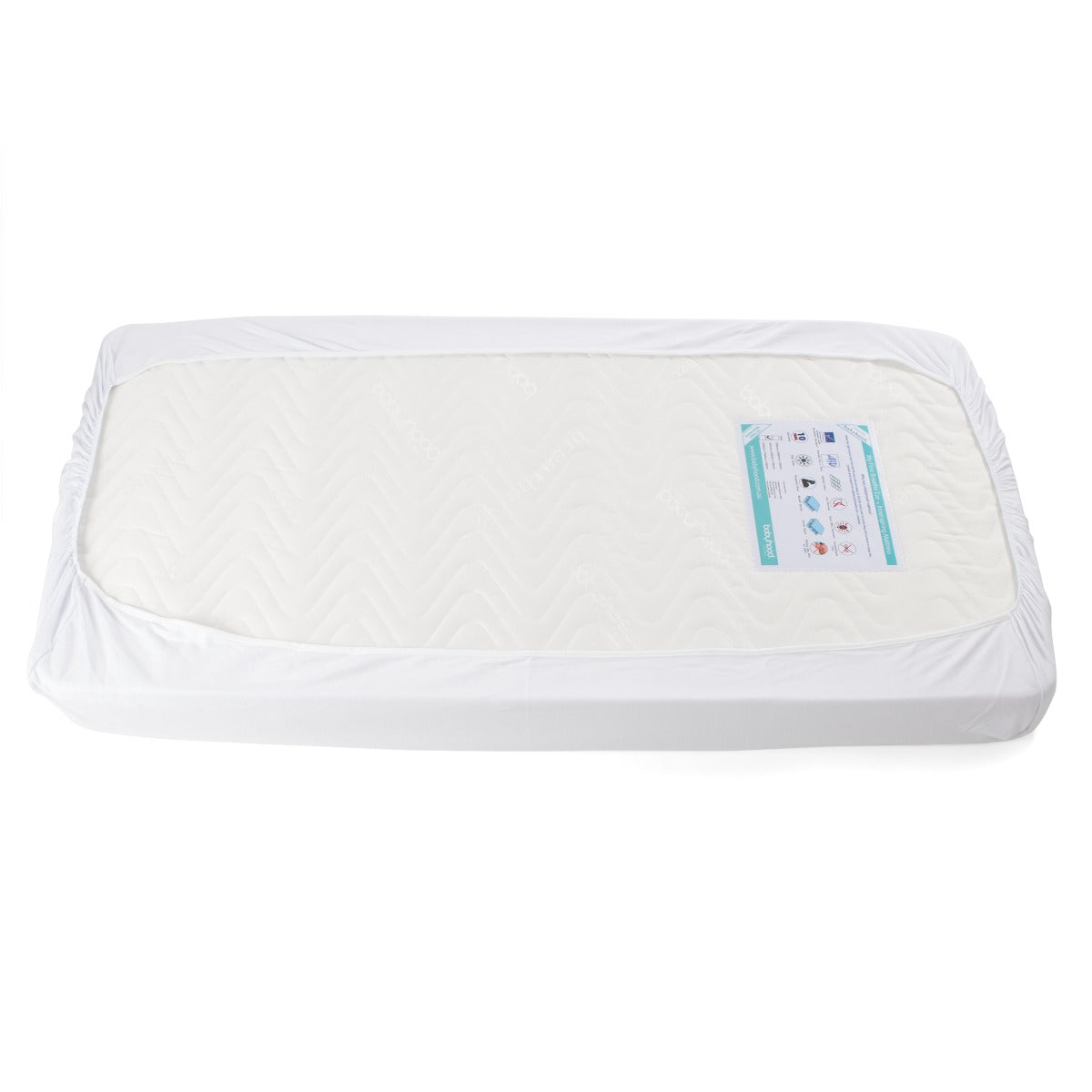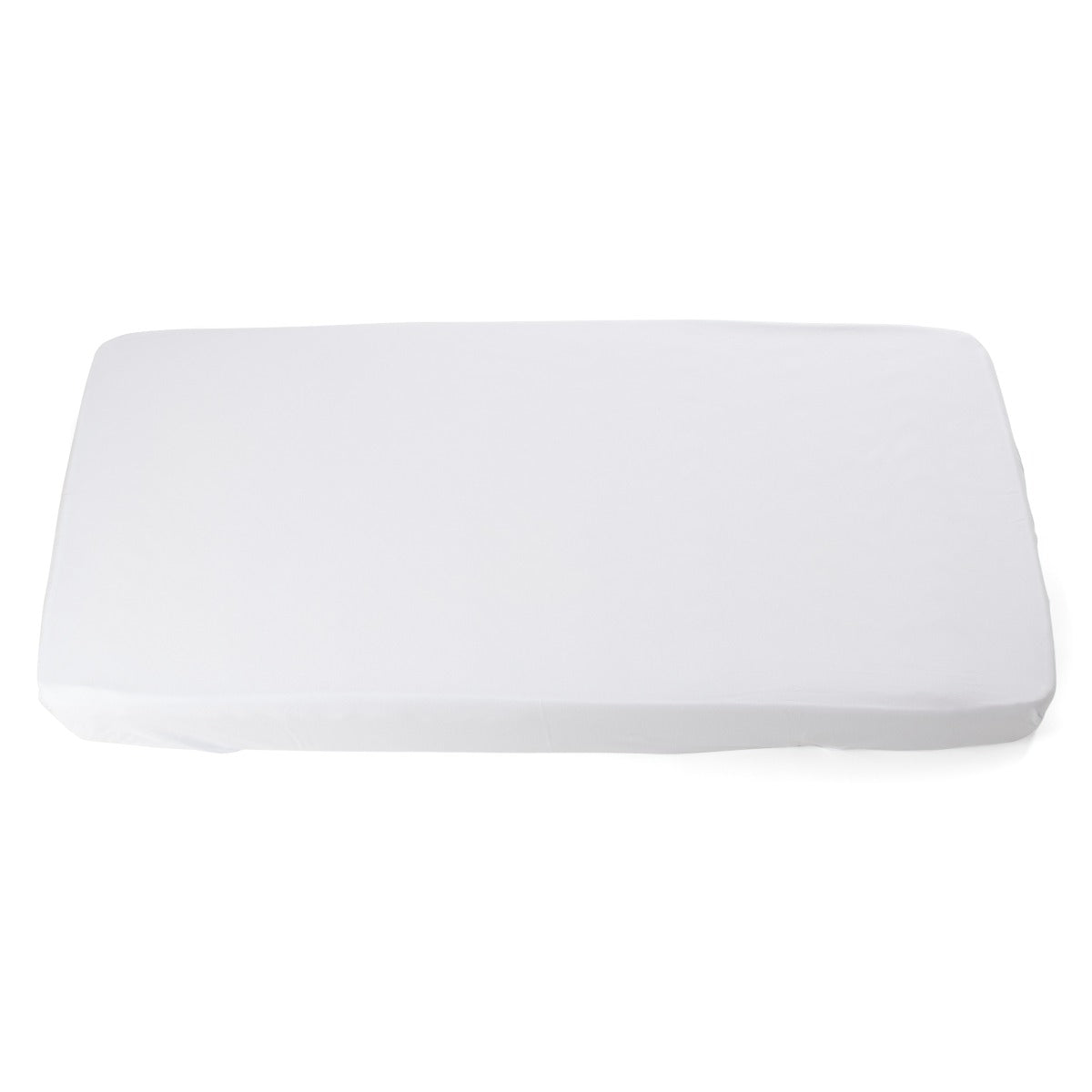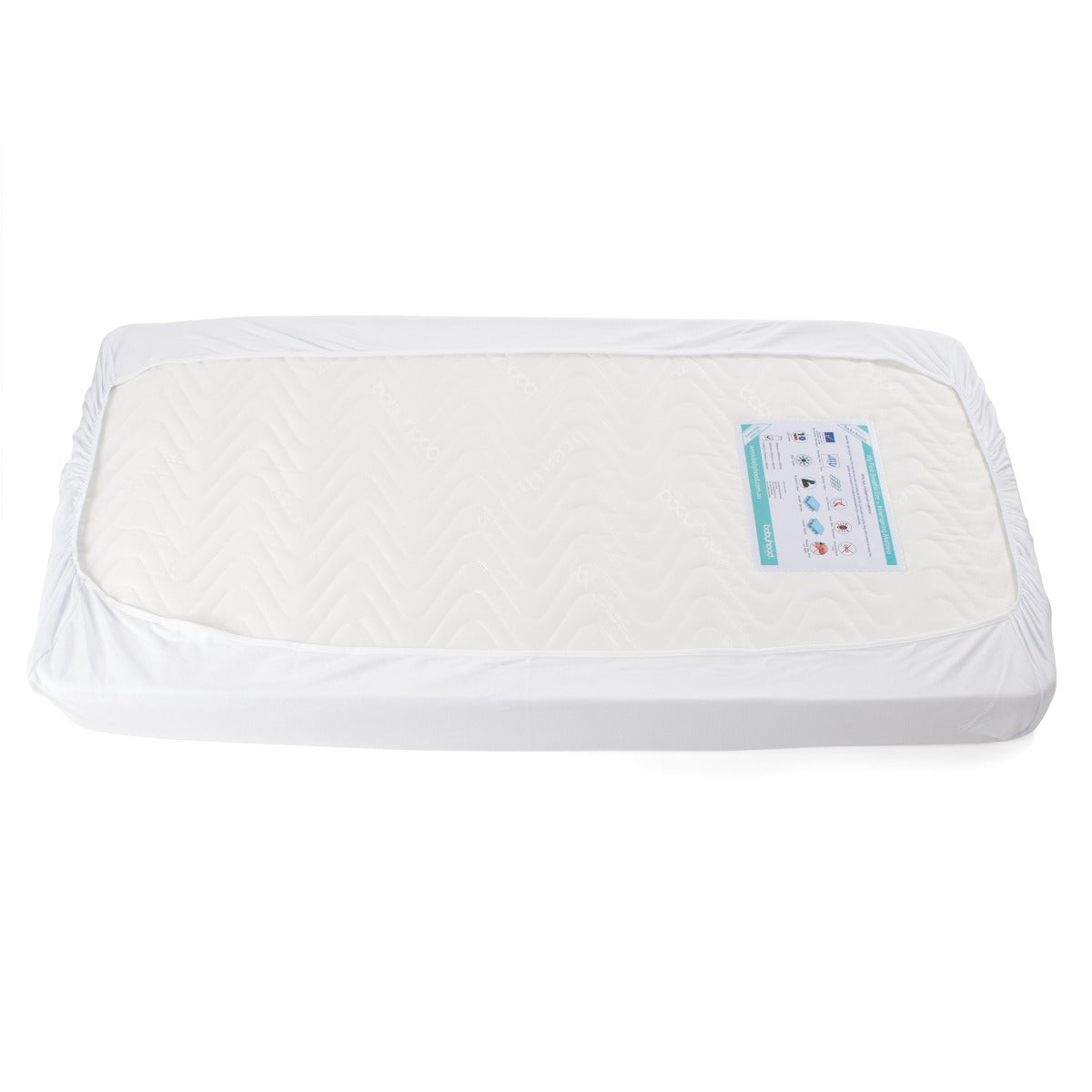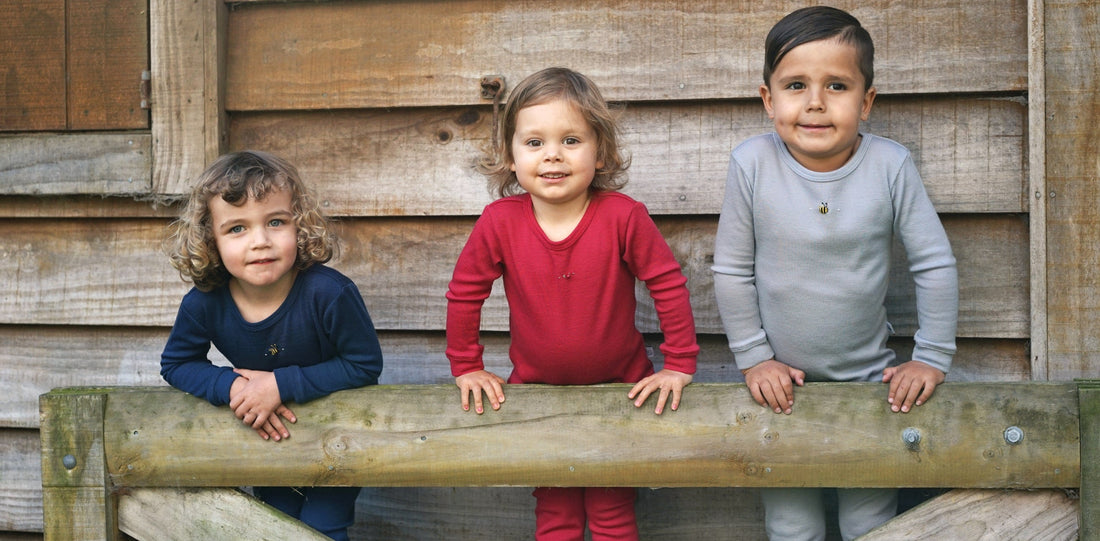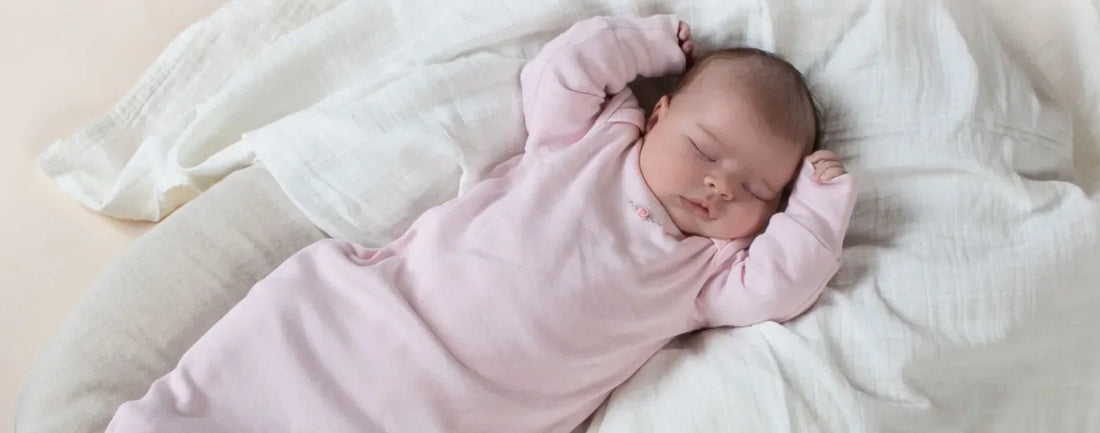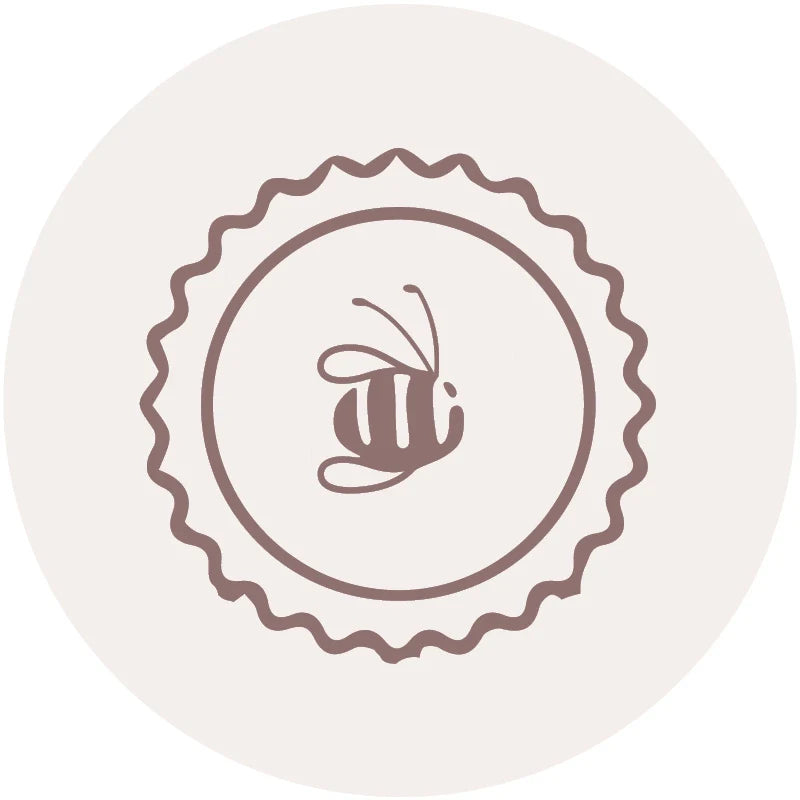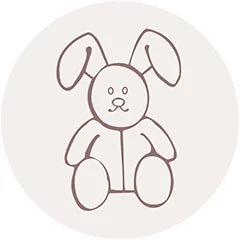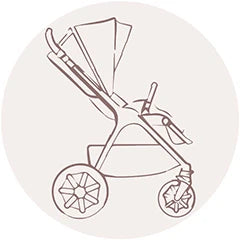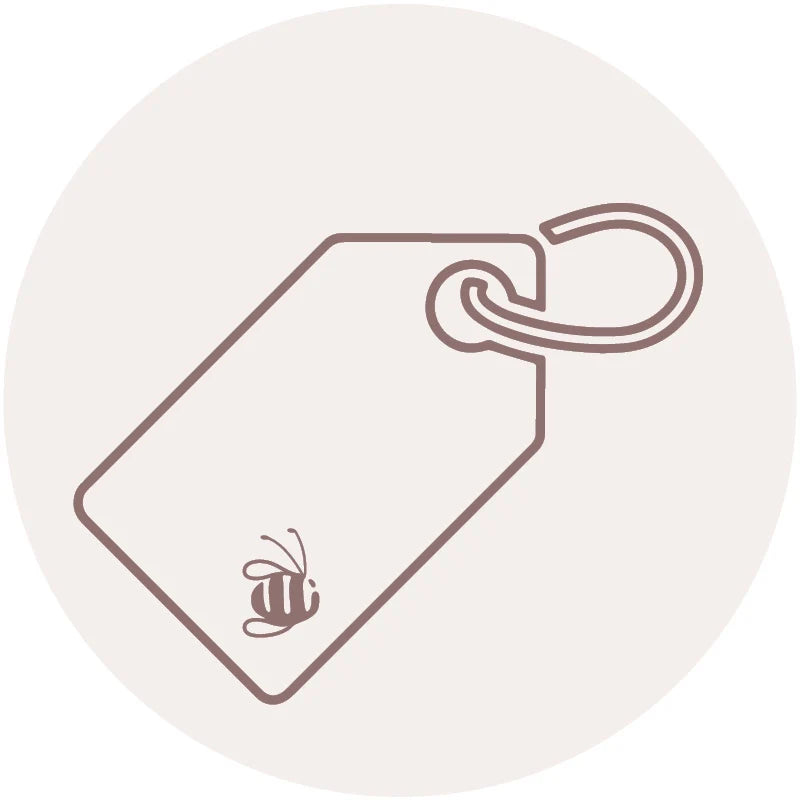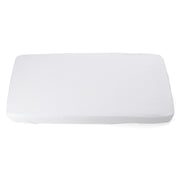Fitted Cot Sheet
Fitted Cot Sheet
SKU:ORG15F
In stock
Couldn't load pickup availability
Overview
Overview
Cover your baby’s mattress in softness and comfort with Dimples Fitted Sheets. Made from 100% Organic Cotton, these sheets offer amazing breathability and are naturally hypoallergenic and dust-mite resistant, making these the best for your baby to sleep on.
Available in both bassinet and cot size to ensure your baby has a good nights sleep for many years to come.
Made in New Zealand
Cot Fitted Sheet - 118 x 60cm
Delivery and Returns
Delivery and Returns
- Delivery: Free within NZ on orders over $100 (excluding bulky items) or $8 standard shipping
- Returns: Accepted within 14 days of receipt with proof of purchase
- Some items are excluded from returns including sale items, hardware, car seats, prams, monitors and personal items - please click here for the full list.
Share this product
Recently viewed products
Related Blogs
Which bed is right for your baby?
Choosing the Right Bed for Your Baby – What’s Best and Why Your little bundle is nearly here – how exciting! 🐣 One of the first big decisions you’ll make is where they’ll sleep. With so many beautiful options to choose from, it’s easy to feel a little unsure. Should you start with a bassinet or go straight to a cot? Do you want something that grows with your baby, or a cosy little nest for those early days? We're here to help you figure out what matters most – and which sleep setup will suit your family best. Bassinet or Cot: What’s the Right Starting Point? Your baby can sleep safely in either a bassinet or a cot from day one, but the best choice really depends on your space, routine, and preferences. A bassinet is ideal if you want: Your baby sleeping close by during those early weeks. Most bassinets fit comfortably beside your bed, making night-time feeds, nappy changes, and soothing much easier. A compact sleep space that’s great for small rooms, shared bedrooms, or apartments. Something easy to move around the house – bassinets are typically lightweight, so you can keep your baby nearby while you get on with your day. A cosier environment for your newborn. The smaller size can help babies feel more snug and secure, which may lead to more settled sleep. A short-term option before transitioning to a cot – especially if you plan to move your baby into their nursery after the fourth trimester. An easier height for recovering parents. The higher profile of most bassinets means less bending, which can be especially helpful after a C-section or challenging birth. At Dimples, we have several lovely options to choose from. The SnuzPod is a clever bedside bassinet that attaches securely to your bed, making night feeds and check-ins easier while keeping baby in their own safe space. If you love a natural, timeless look, the Nestling Moses Basket is a lightweight, woven option that’s easy to move from room to room and brings a beautiful softness to your nursery. The Snoozi Bassinet is another great choice – designed for safe co-sleeping, it offers mesh sides for airflow, a washable inner nest, and folds down easily for travel or storage. Each option has its own charm, and what works best will depend on your lifestyle, home setup, and how you’d like those early newborn nights to feel. Thinking Ahead? Choose a Bed That Grows With Your Child If you're looking for something that can go the distance – from those sleepy newborn days through toddlerhood and beyond – the Stokke® Sleepi™ is an outstanding choice. Starting off as a snug and secure Sleepi Mini bassinet, it gives your baby a nest-like sleep space in the early months. Its soft oval shape and breathable sides create a cocooned environment, helping your newborn feel safe and settled. But the real beauty of the Sleepi is what happens next. With a simple extension kit and a new mattress, it can transform from a bassinet into a full-sized cot! Then when your little one is ready, simply take one of the sides off and you have a toddler bed – suitable for children up to around 5 years old. It’s an investment that pays off – both practically and emotionally. Your child can grow up in the same bed they’ve slept in from day one. Beautiful Cot Options to Consider Not every family needs a full multi-stage setup – so here are some other wonderful options depending on your needs, aesthetic and space. Most also offer a toddler bed conversion once your little one is ready for the freedom to get in and out of bed by themselves. Here are a few favourites: Amara Cot Crafted from sustainable European beech, the Amara brings a calm, natural feel to your nursery. It starts with a higher mattress setting for newborns and easily converts into a stylish toddler bed with the optional conversion kit – perfect for parents wanting both form and function. Mackenzie Cot With clean lines and a single-tone finish, the Mackenzie adds warmth and simplicity to your nursery. It grows with your child by converting to a toddler bed and can be paired with the matching dresser for a cohesive look. Indi Cot A gentle boho option that pairs soft hessian fabric with natural tones to create a warm, grounded feel. Made from sustainable materials, the Indi Cot converts easily to a toddler bed for long-lasting practicality. Tommi Cot Subtle Scandi design meets versatility in the Tommi Cot. Available in white or oak finishes, it offers 3-in-1 functionality, growing from a cot to a toddler bed or daybed with the optional junior rail – a timeless piece that suits both modern and classic spaces. What’s Best For You? Every family is different. To help you decide, think about: Where your baby will sleep in the early months. How long you want your sleep solution to last. Your space – are you in a small home, apartment, or planning to move? Your lifestyle – do you travel often? Need a portable option? Your budget – are you wanting one long-lasting solution or buying in stages? We’ve carefully curated a range of sleep options to suit every family – whether you're after something compact, long-lasting, budget-friendly, or beautifully designed to match your nursery. There’s something here for every stage, every space, and every style. Browse our full range of cots, bassinets, and junior beds here, or pop in-store to see them up close – we’re always happy to help you find the right fit for your little one’s first sleep space.
Learn moreWhy Buy New Zealand Made Clothes?
From garments more well-travelled than most of us to clothing produced in factories not quite up to scratch – the backstory of what we buy has become an increasingly hot topic. Keeping shopping habits local is an easy way to not only do your bit for the environment but also support the New Zealand economy and the people who live here. Better still, buying New Zealand-made no longer means compromising on quality or choice – in fact, it’s typically quite the opposite! Do it for the birds and the bees (literally) The environmental impact of clothing sourced overseas is huge. Buying local often means reducing ecologically unfriendly packaging, and will certainly cut out vast amounts of fossil fuels in transport. Clothing made in New Zealand also complies with strict guidelines, which is a big win for the environment in an industry that is notoriously hard on the planet – no pesticide and fabric-dye-filled runoff contaminating water supplies here thanks! Feelgood tip – swap those well-travelled goods with locally-made merchandise. Fast fashion or future-friendly? The days of patching worn jeans and sewing up holes in socks are long gone – popping to the shops for a wallet-friendly replacement is just too easy. But with prices so low, something’s got to give – whether it’s the quality of raw materials, worker conditions, or the standard of the finished product. This fast-fashion movement ironically has you popping to the shops for replacements a whole lot more often! All this disposable fashion also becomes a major landfill problem. Synthetic fabrics are much cheaper to produce (they make up about 60% of a typical closet) and can go on to live hundreds of years after parting ways with your wardrobe. On the flip side, buying New Zealand-made means these items live up to local production standards, and are far more likely to survive playground adventures and multiple trips through the washing machine. They might even look good enough to pass on to family or friends once you’re done with them – recycling at its best! Feelgood tip – invest in quality, locally made items that can be passed on. Guilt and hassle-free shopping Shop-a-holics rejoice! If you’re buying locally produced goods, pat yourself on the back for your contribution to the local economy. You’re supporting fair, local employment and helping to keep New Zealand businesses alive and able to compete with the big guys. Shop-a-holics rejoice some more! If you’re buying locally produced goods and have accidentally bought the wrong size for your little one, it’s as easy as popping into a store or a local phone call to fix your problem. Local businesses are usually happy to help (as each customer is important) whereas it’s likely you’re literally one in a million for big global companies. Even finding contact details can be a challenge! Feelgood tip – shopping local simply supports New Zealanders. Dimples' does it differently No compromises here, just adorable, high-quality clothing, using high-quality raw materials, produced by fairly treated Kiwi workers! Our commitment to the environment hasn’t changed as the business has evolved and grown, and neither has our commitment to our workers. All Dimples clothing is made here in New Zealand from locally sourced merino (or from our neighbouring Australian sheep) and pure organic certified cotton (to ensure the impact of cotton farming is minimal). We don’t have a huge factory producing our clothing – instead, our expert sewers work from their homes. It’s essentially a scaled-up version of the small home workshop where it all started. The end result is hard-wearing, long-lasting clothing – that stays looking super cute for longer. Feelgood tip – buy New Zealand made.
Learn moreNewborns & Sleep: What to Expect and Survival Tips
Bringing a new baby home is one of life’s most beautiful - and exhausting - adventures. In this blog, Family Sleep & Wellness Coach, Lauren Moran from Little Dreamers, shares her expert advice on newborn sleep in the fourth trimester. With a warm, realistic approach, she helps parents feel empowered, informed, and supported through those early weeks, offering practical tips for creating a nurturing sleep environment and caring for yourself, too. Newborns & Sleep: What to Expect and Survival Tips By Lauren Moran from Little Dreamers https://www.littledreamers.co.nz/ Instagram: @little.dreamers.nz Congratulations parents! Whether this is your first or fourth bubba in your beautiful family, there is so much that can still feel overwhelming (or it’s a memory you’ve blanked out from last time!), but we are here to reassure you in those early days. Also known as the fourth trimester, those first 12 weeks following birth while trying to navigate your baby’s feeding and sleeping patterns can be quite the whirlwind. This blog is designed to help empower you, educate you, and normalise newborn sleep so that you feel confident to understand and support your little love. Let’s start this journey with “there is no such thing as bad habits when it comes to supporting your baby”. Yes, you heard that right! No such thing. Forget what social media, society or family/friends tell you. You do what works best for you and your family. There may come a time when those ways no longer work for you, which is totally fine, and we can change that. As you step into this new season remember you are nothing short of amazing and your little one is lucky to have you. Sleep is not only a necessity for your baby, but also you! We all need it. Sleep enables the body to repair itself, replenish those energy levels and regulate brain functions. When I have had more sleep, I feel like a better person showing up for myself and my family. It positively impacts our emotional and physical well-being too. So what can you expect in that fourth trimester? It is a busy, yet wonderful whirlwind of events that can bring about so much change both physically and emotionally. Feeling like you need to just cry? Go for it! Don’t know why? Many of us don’t! Your littlest love is adapting to life earthside and you are recovering from growing them and bringing them into this world. Offering love, care and comfort is exactly what’s needed for you both. With emotions running at an all-time high, it is important to focus on yourself too. I vividly remember my post-natal midwife coming for her first appointment and the first thing she said was that she was there for me. As a first-time mum I was slightly confused as I thought she would be looking at my daughter and making sure she was okay – and she did just that, but also had her focus on me. It is incredibly important to prioritise self-care during this time. That fourth trimester can be so overwhelming so making sure you prioritise your own body and mind will be key. It certainly may come with a feeling of guilt, just know that these are all very normal feelings & thoughts. Self-care is a necessity, not a luxury, for you both. So what can you focus on in the early days in terms of sleep? Let’s start with sleep environment. Laying some healthy foundations from the get go will not only aid in easier settling but also support your baby to stay asleep and get those much needed zzzz onboard: ● Darkness - When our little one enters a dark room, their bodies start to produce melatonin (sleepy hormone). This hormone is produced in the pineal gland and fluctuates throughout the day and night. Ensuring a dark sleep space will help your baby flood themselves with sleep hormones and support settling and restorative sleep periods. ● White noise - This is a fantastic tool to use within their first 18m of life. It replicates those sounds heard in the womb, which in those early days bring them safety and comfort. It can also drown out any noises outside the bedroom that might startle or wake them. It also creates a consistent sleep environment and positive sleep association for them when building on your sleep shaping. ● Temperature - Keep the room a good temperature so that your little one isn’t too hot or too cold. Check this guide on dressing your little one depending on the temperature of the room. The temperature often drops around 3 or 4am and can often be a reason our little ones wake around this time. Feel like you’ve nailed the above and bubs still doesn’t want to sleep in their cot/bassinet? We get it. And this is totally normal and expected – it’s different! Embrace those newborn snugs, strap your little one to you, be nap trapped, find a good series to watch, feed them to sleep, rock them, pat them, and swap out with the support around you if you need to. Your smell, heartbeat, skin feel and voice is their safe place of comfort (and of course it would be!). Spend those first couple of months getting to know your little one and understanding those hungry cues, tired cues and awake windows. Newborns won’t be able to settle themselves consistently until closer to 4 months old so contact and assisted naps will be your best friend. Your little one will rely on you to support them and assist them in getting to sleep. Setting up the right sleep environment will be key when you’re ready to begin supporting them in their own sleep space. Start one step at a time. Awake windows and tired cues Are they under tired, overtired or just hungry? Understanding these windows and cues will be key in having a more settled baby and parent! In those early days you will find those awake times are mostly spent feeding with a small gap at the end for a burp or eye-to-eye contact with you. An awake time is from the moment your baby wakes through to the moment they are sleeping again. Awake Windows in those first four months can look like: 0-3 weeks: 45 – 60 minutes 3-6 weeks: 1 – 1:15 hour 6-9 weeks: 1:15 – 1.5 hours 9-12 weeks: 1.5 hours 12-16 weeks: 1.5 – 2 hours Once your little one is nearing 4 months old you can look at a basic routine rather than awake windows. Our 4-7 month routine guide is perfect for this. You will see that awake windows get longer as our little people’s sleep needs change and this will depend on baby’s age, time of day and whether they are going through a nap transition. In those first 6-8 weeks it is normal to see a later bedtime as our little one’s circadian rhythms don’t mature until closer to 4 months of age (meaning that they don’t understand the difference between day and night) and they may be cluster feeding to get those calories in before bedtime. Being proactive and offering sleep before they get overtired is a great win. They are signs your little one is letting you know it is time to start winding down and getting ready for some sleep before they become overstimulated and enter a state of hyperarousal. Let’s have a look at some tired cues to watch out for: ● Clenching hands into a fist ● Pulling at their ears or hair ● Jerky or shaking movements ● Yawning ● Rubbing eyes ● Vacant look/staring into space ● Quieter/less chatty ● Grizzling ● Sucking thumb/hand Feeding and partner involvement Whether you’re choosing to breastfeed, bottle feed, formula feed or mixed feeding, it’s a journey! During those first 2-3 months your little one will look to feed whenever they can. This is what is commonly known as ‘on-demand feeding’. And it is just as it sounds – feeding your baby when they are showing signs of being hungry. What does this look like? ● Feeding every 2-3 hours (time starts from the start of a feed) can encourage them to consume more calories during the day and can reflect in longer overnight stretches of sleep ● Feeding on demand will help to establish breastmilk supply (if breastfeeding) ● If bottle feeding, follow their cues as volumes of milk will change as their needs change Babies are really great calorie regulators so you don’t need to worry about over-feeding them. In those first 4 months your little one will feed frequently which can be very time consuming. They still have little tummies so the capacity to stay full for long isn’t quite there, and they may wake frequently to feed. How can non-breastfeeding partners support routine and settling? Research now shows that a non-breastfeeding partner’s role in supporting breastfeeding and home routine can be a game-changer! Figuring out how to tackle the day and night time as a dynamic duo can help your breastfeeding partner to feel more rested, and help you as the non-breastfeeding partner to feel actively involved in your little one's care. As we got into the thick of feeding with our second, my husband inspired me with how he showed me he was there with me through this: ● Dinner preparation & cooking ● Getting the bath ready for child 1 & 2 ● Supporting the wind down routine ● Doing the initial settling for bed after a top up feed ● Burping the baby ● Changing nappy in between feeds ● Turning the night light on overnight Don’t underestimate the power of a small act of support in those early days. We have a whole blog around partner support that is a great read! However you choose to support your littlest love earthside is nothing short of amazing. There is no wrong way to support them and if what you’re doing is working for you, then great! Don’t change a thing! Remember that there are no bad habits when it comes to loving, settling and reassuring YOUR little one. You are doing what works for you that is calming, comforting and reassuring to them. Babies can build on these and rely on them as associations to go to sleep get back to sleep but rest assured, these can be changed if they are no longer working for you in the future.
Learn more

